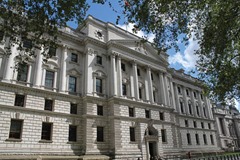UK procurement reform rolls on
 agendaNi reviews the progress made in Whitehall over the last 15 years.
agendaNi reviews the progress made in Whitehall over the last 15 years.
Ever since the 1990s when public concern about government waste was hitting the headlines, the UK Government has been continuously reforming the structures and processes relating to how it bulk-buys goods and services with around £220 billion annually of tax-payers’ money.
Following the publication of the Gershon review of central government procurement in 1999, the main central purchasing body – The Buying Agency – was brought under the wing of a new organisation, the Office of Government Commerce (OGC), in April 2000 within Gordon Brown’s HM Treasury. The aim was to drive for greater efficiency and savings in government procurement across the board.
The OGC introduced a wave of centralisation, acquiring the purchasing arm of the Government’s Central Computer and Telecommunications Agency (CCTA) and adding the non-clinical procurement of the NHS to its portfolio. The OGC also prioritised training in a bid to professionalise procurement across government.
In June 2010, the new Coalition Government transferred OGC and procurement to the Cabinet Office to become part of the Efficiency and Reform Group (ERG) and renamed the new purchasing entity the Government Procurement Service (GPS).
And recently, finally, following a strategic review commissioned by Cabinet Office Minister and Paymaster-General Francis Maude, the GPS has been merged with the other commercial functions of the Cabinet Office and the common goods and services currently undertaken by government departments, to create the all new Crown Commercial Service (CCS).
All of this reform has been much more than a process of moving around the deckchairs. It is a reflection of how successive governments have identified public procurement as a major area for better performance – achieving greater results for less money. Also, the reform process has been moving in the one direction – that of more and more centralisation.
The centralisation of procurement has facilitated the introduction of new standards and new government-wide delivery models. For example, in relation to the measurement of ‘savings’ (notoriously difficult to prove in the area of procurement because they can be a mixture of demand and price effects), the CCS has introduced a common measurement methodology where savings claimed are set against government baseline costs and must be supported by supplier-provided transactional management information. Savings claimed on behalf of any new initiative must include the full implementation costs of that initiative.
Similarly, government procurement now follows a ‘lean sourcing’ set of principles based on a five-stage process setting out the most efficient path for getting from the required business outcome to the award of a contract.
Lean sourcing principles include: establishing (with the customer) a clear understanding of the required business outcomes; carrying out extensive pre-market engagement; setting up a strong planning and management discipline using a standard ‘toolkit’; Ensuring readiness to go to market e.g. a well-prepared comprehensive bidders’ pack; streamlined engagement with prospective suppliers (‘bootcamp’ rather than endless iteration); and the use of OJEU-compliant eSourcing tools to help manage the whole process.
In addition to the lean sourcing of goods, CCS has developed a substantially revised set of model terms and conditions for major services contracts. The new model services contract, which is targeted at contracts of value in excess of £10 million, aims to aid delivery assurance and reduce the burden of administration while cutting legal costs and reducing negotiation time.
The reform of government procurement continues to be a priority across the UK and remains at the forefront of the Government’s efforts to drive efficiency and lower the budget deficit. The latest reform and the establishment of the Crown Commercial Service is unlikely to be the end of the story.





